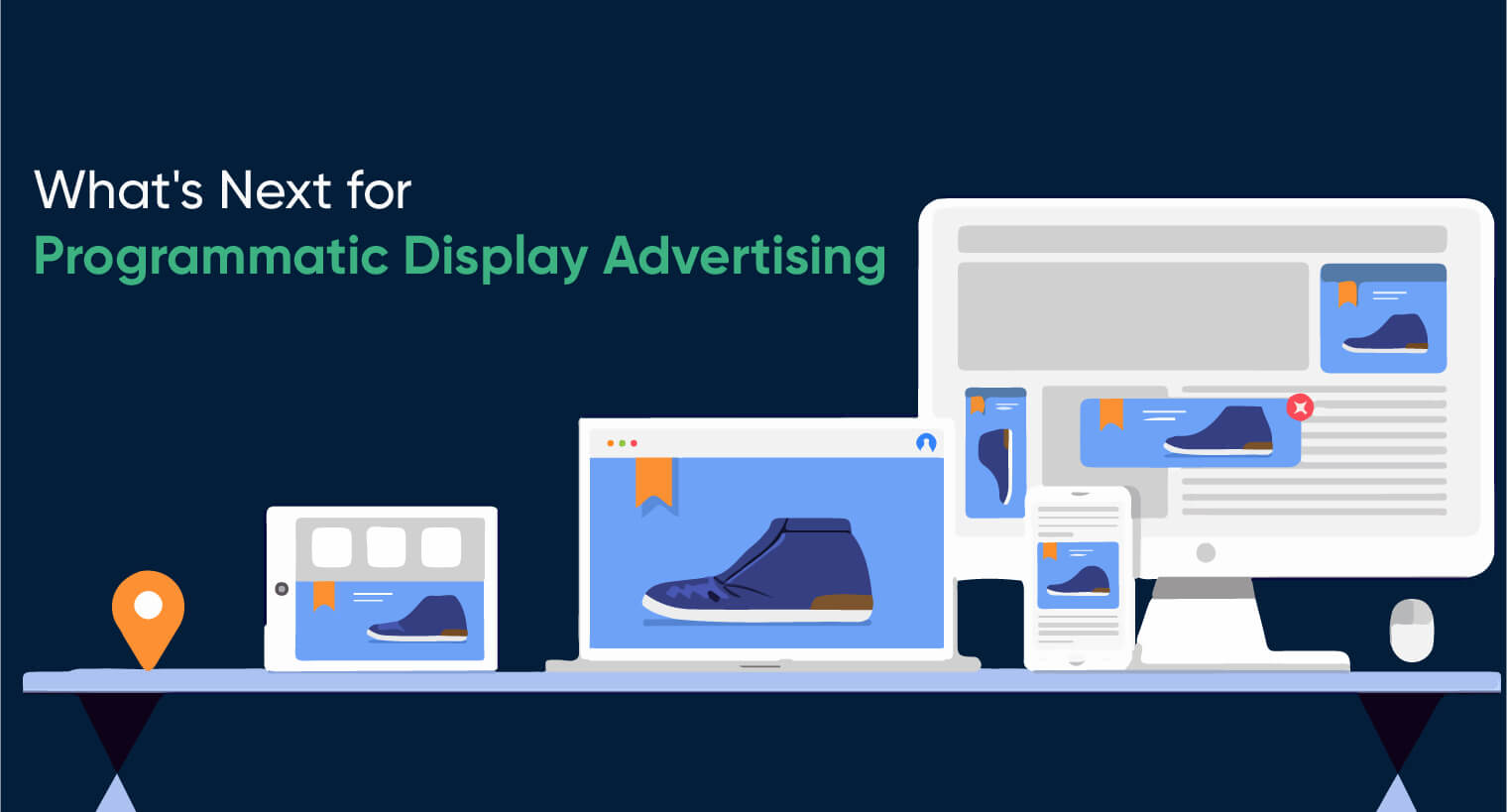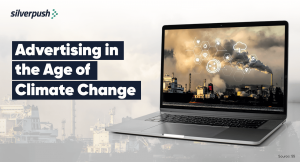What Comes Next For Programmatic Display Advertising? | 25 Jul, 2022

According to recent research, more than half of all advertising spending will be digital by 2022. With more and more marketers allotting a large part of their ad budget to programmatic advertising, the future of programmatic display advertising seems to be shining bright.
These digital advertising systems provide advertisers with increasingly detailed data, allowing them to contact their customers more efficiently.
Since 2013, the programmatic display advertising market has been thriving, and investment in this area has been skyrocketing.
Research states that programmatic buying hit $455 billion in 2021 and is predicted to reach $524 billion by the end of 2022, making it the leading way for purchasing digital display advertisements in the United States.
What is Programmatic Display Advertising?
Before moving forward and understanding what programmatic display advertising has in store for us, it is important to understand what it means.
Programmatic advertising is the use of machine learning and artificial intelligence to buy and optimize digital ads in real-time. Human bargaining and fixed rates are being replaced by real-time auctions in which advertising is acquired as soon as a visitor accesses the page. This helps to alleviate the worry and difficulty of advertisers since they had to earlier purchase straight from publishers.
But, do you know what happens when you conduct a programmatic advertising campaign? Below are the three things that take place:
- You purchase ad space through an Ad Exchange.
- You place your offer against the competition.
- If you are the highest bidder, your ad will be served.
The purpose of programmatic advertising is to increase ad efficiency and transparency for both publishers and marketers. Furthermore, it aids in the automation of the media buying decision-making process by utilizing software to target certain audiences.
What Has Programmatic Display Advertising in Store For Us in the Future?
As the world of programmatic advertising moves toward some changes, let’s explore what are some of the trends to be experienced in programmatic next.
- Wearable Technology
Almost one-fifth of all individuals in the United States report wearing a smartwatch or wearable fitness tracker on a regular basis. Wearable technology is growing so prevalent that intelligent marketers are beginning to use it for programmatic advertising. It enables the audience to reach the appropriate people at the right moment and get a competitive advantage in the market.
- Streaming Online
One of the most promising areas for programmatic growth is video. According to data, 45 percent of marketers see video as one of the top programmatic opportunities in the next six to twelve months.
Programmatic Advertisement in the Post-Cookie Ecosystem
It has been a long time since programmatic advertisers are using third-party cookies to collect information about a user’s online activity, site preferences, location, and other factors.
Later, this information is then evaluated and utilized to create patterns that assist marketers in displaying more relevant content to reach the targeted audience.
Because the data in cookies is not changed, cookies are not hazardous. Malicious individuals, on the other hand, can steal cookies and obtain access to people’s browser history.
To improve web privacy, web browsers such as Safari and Firefox have made third-party cookies disabled by default. Similarly, Google said in January 2020 that third-party cookies will be blocked by default in a phased method that would run until 2022.
Programmatic advertisers are concerned that a cookie-free ecosystem will have a detrimental impact on campaign success. Without cookies, it would be far more difficult to target an audience, follow advertising, and assess outcomes.
Having said that, data-driven marketing isn’t going away anytime soon. Ad tech can continue to function even in the absence of third-party cookies, and it will even encourage better user control and privacy. Many organizations are already working to build a more secure and productive advertising environment, requiring verification in exchange for sponsored adverts and helpful information.
Programmatic advertising will demand solutions that prioritize identification, safety, and customer confidence in a cookie-free environment. To reduce the risk of data loss and cyberattacks, strong authentication and security procedures for all users are required.
Programmatic advertising has developed alongside technology and customer behavior. Mobile technology, as well as social media usage, has risen fast throughout the world. This rise has prompted advertisers to devote two-thirds of their programmatic advertising spending to mobile advertisements rather than desktop ads. Aside from the browser, programmatic advertising is being employed in new channels such as television, audio, and out-of-home (OOH).
The Future Shines Bright With Programmatic Display Advertising
Programmatic advertising has the ability to help brands succeed. It is the fastest-growing component of digital marketing today. If you want to reach customers with pinpoint accuracy, investing in programmatic is a must. Moreover, with third-party cookies getting banned, programmatic advertising is surely the future of digital advertising.

BLOGS
Super Bowl Advertising: A Month-Long, Multi-Screen Event for Brands
For Americans, there are two events that they hyped for a whole year - Football season, and waiting for football season. Football remains highly popular among Americans, with searches for "NFL Draft" and viewership numbers showing an unwavering interest in the sport. According to Google Search data, football is more ...

BLOGS
Advertising in the Age of Climate Change: The Adoption of Carbon Emission Metrics
The urgency of the climate crisis is increasing, and the media industry is no exception. While some professionals are working to reduce their direct operational emissions, there is an urgent need for common standards to be set for indirect emissions that come from digital advertising. The digital advertising industry is becoming ...

BLOGS
Complete Guide to Reaching Audience with Cookieless Advertising
What’s your alternative game plan for effective cookieless advertising? Haven't thought about it yet? The time is now! Introduction The complete year of 2022 was dedicated to cookies! Panic is setting in amongst marketers owing to mounting privacy laws and the ban on cookies, causing them to re-evaluate their strategies.







